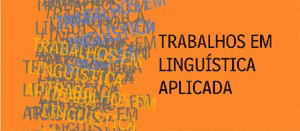ABSTRACT
Emojis are linked to the emotive expression, as well as to the identification of the prevailing speech act in a communicative exchange carried in the digital environment. From this perspective, this study is in line with the notion that these icons may be used to highlight the illocutionary force of a given speech act (DRESNER, HERRING, 2010DRESNER, E; HERRING S. (2010). Functions of the Nonverbal in CMC. Emoticons and Illocucionary Force. Cambridge: Cambridge University Press., AVELAR, 2018AVELAR, F. T. (2018). A pragmática dos emojis . Dissertação de Mestrado em Linguística. Faculdade de Letras, UFMG, Belo Horizonte.), more specifically, the apologies following refusals, (KERBRAT-ORECCHIONI, 2001KERBRAT-ORECCHIONI, C. (2001). Les actes de langage dans le discours: théorie et fonctionnement. Paris : Nathan., LEECH, 2014LEECH, G. (2014) The pragmatics of politeness. Oxford: Oxford University Press.). To verify the validity of this proposal, we carried the analysis of 432 threadscontaining emojis, collected from interactions within a WhatsApp group (AVELAR, 2018AVELAR, F. T. (2018). A pragmática dos emojis . Dissertação de Mestrado em Linguística. Faculdade de Letras, UFMG, Belo Horizonte.). The results point out that emojis constituted a strategy of repair, used to restore the image of the offender and that of the offended. These strategies also served as repairs, due to the potential face loss resulting from the accomplishment of a dispreferred speech act, such as refusals.
Keywords:
strategies of repair; emoji









